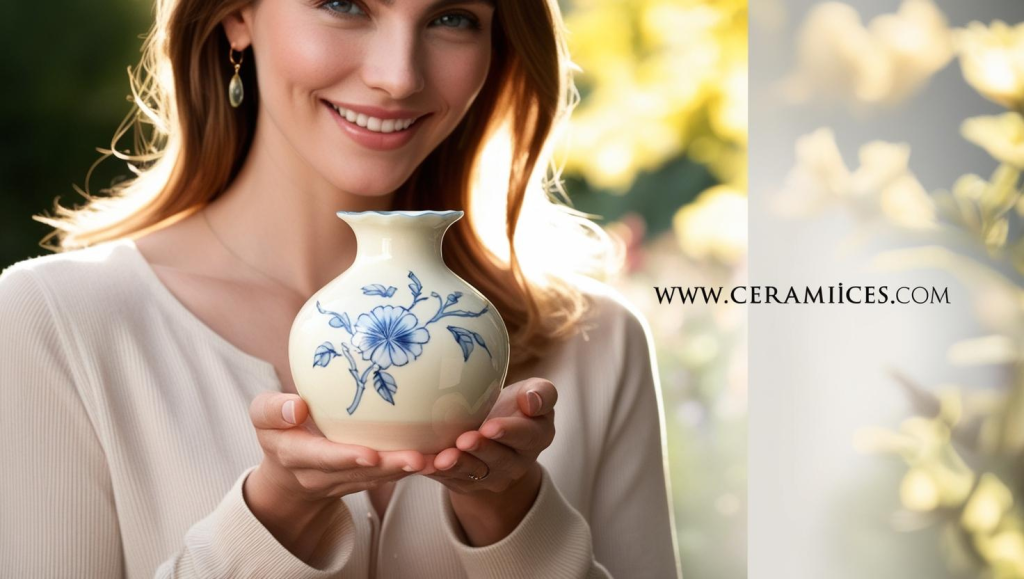Ceramic is a versatile material used in a wide range of applications, from kitchenware and bathroom tiles to decorative items and industrial components. Its durability, aesthetic appeal, and heat resistance make it a popular choice for many households and industries. However, one common question that arises is, “Does ceramic break easily?” The answer isn’t straightforward, as the durability of ceramic depends on its type, quality, and how it’s used. In this comprehensive guide, we’ll explore the factors that affect ceramic’s durability, how to prevent breakage, and tips for maintaining ceramic items. We’ll also answer 10 frequently asked questions to help you better understand this fascinating material.
Understanding Ceramic: Composition and Properties
Before diving into the durability of ceramic, it’s essential to understand what ceramic is made of and how it behaves under different conditions. Ceramic is a non-metallic, inorganic material typically made from clay that is fired at high temperatures. This process makes ceramic hard and durable, but its properties can vary depending on the type of clay and glaze used.
Key Characteristics of Ceramic:
- Hardness: Ceramic is a hard material, making it resistant to scratches and wear.
- Brittleness: Despite its hardness, ceramic is prone to cracking or breaking under impact or sudden temperature changes.
- Heat Resistance: Ceramic can withstand high temperatures, making it ideal for kitchenware and industrial applications.
Does Ceramic Break Easily? The Answer Explained

The short answer is it depends. While ceramic is hard and durable, it is also brittle and can break under certain conditions. The likelihood of ceramic breaking depends on several factors, including its quality, thickness, and how it’s handled.
Factors That Affect Ceramic’s Durability:
- Type of Ceramic: Some ceramics, like porcelain, are denser and more durable than others.
- Glaze: A high-quality glaze can add strength and protect the ceramic from damage.
- Thickness: Thicker ceramic items are generally more durable than thin ones.
- Usage: How the ceramic is used and handled plays a significant role in its longevity.
Common Causes of Ceramic Breakage:
- Impact: Dropping or hitting ceramic can cause it to crack or shatter.
- Thermal Shock: Sudden temperature changes, such as placing a hot ceramic dish in cold water, can cause it to break.
- Improper Handling: Mishandling ceramic items, especially thin or delicate ones, can lead to damage.
Types of Ceramic and Their Durability
Not all ceramics are created equal. Here’s a breakdown of the most common types of ceramic and their durability:
1. Earthenware
- Less dense and more porous.
- More prone to chipping and breaking.
- Often used for decorative items and pottery.
2. Stoneware
- Denser and more durable than earthenware.
- Resistant to chipping and breaking.
- Commonly used for dinnerware and bakeware.
3. Porcelain
- The densest and most durable type of ceramic.
- Highly resistant to breaking and chipping.
- Ideal for high-quality dinnerware and industrial applications.
4. Bone China
- A type of porcelain mixed with bone ash.
- Lightweight yet durable.
- Often used for fine china and teacups.
How to Prevent Ceramic from Breaking

While ceramic is inherently brittle, there are steps you can take to minimize the risk of breakage:
1. Handle with Care
- Avoid dropping or banging ceramic items.
- Use both hands when carrying large or heavy ceramic pieces.
2. Avoid Thermal Shock
- Allow ceramic dishes to cool before washing them.
- Avoid placing hot ceramic items directly on cold surfaces.
3. Use Protective Measures
- Use padded mats or trivets under ceramic dishes.
- Store ceramic items in a secure location to prevent falls.
4. Choose High-Quality Ceramic
- Invest in high-quality, durable ceramics like stoneware or porcelain.
- Avoid thin or poorly made ceramic items.
Benefits of Using Ceramic
Despite its brittleness, ceramic offers several advantages:
- Durability: High-quality ceramics can last for years with proper care.
- Heat Resistance: Ceramic is ideal for baking and cooking.
- Aesthetic Appeal: Ceramic items are available in a wide range of colors and designs.
- Non-Reactive: Ceramic does not react with food, making it safe for kitchen use.
Risks of Using Ceramic
While ceramic is a durable material, there are some risks to be aware of:
- Breakage: Ceramic can crack or shatter under impact or thermal shock.
- Sharp Edges: Broken ceramic can have sharp edges, posing a safety hazard.
- Cost: High-quality ceramics can be expensive to replace if broken.
Tips for Maintaining Ceramic Items
To extend the lifespan of your ceramic items, follow these tips:
- Clean Gently: Use mild soap and a soft cloth to clean ceramic.
- Store Properly: Stack ceramic dishes with padding to prevent chipping.
- Inspect Regularly: Check for cracks or chips and replace damaged items.
FAQs About Ceramic Durability
1. Does ceramic break easily when dropped?
Yes, ceramic can break easily when dropped, especially if it’s thin or of low quality.
2. Can ceramic withstand high temperatures?
Yes, ceramic is heat-resistant and can withstand high temperatures, making it ideal for baking and cooking.
3. Is porcelain more durable than regular ceramic?
Yes, porcelain is denser and more durable than other types of ceramic.
4. Can ceramic dishes go in the dishwasher?
Most ceramic dishes are dishwasher-safe, but hand washing can help preserve their finish.
5. How do I prevent ceramic from cracking in the oven?
Avoid sudden temperature changes by placing ceramic dishes in a cold oven and allowing them to heat up gradually.
6. Can I repair a broken ceramic item?
Yes, small cracks or chips can be repaired with ceramic glue, but severely damaged items may need to be replaced.
7. Is ceramic safe for food use?
Yes, ceramic is non-reactive and safe for food use, especially if it’s glazed.
8. How long do ceramic items last?
With proper care, high-quality ceramic items can last for decades.
9. Can I use ceramic on a stovetop?
Most ceramic dishes are not designed for direct stovetop use, but some ceramic cookware is stovetop-safe.
10. What’s the best way to store ceramic items?
Store ceramic items in a secure location with padding to prevent chipping or breaking.
Conclusion
So, does ceramic break easily? The answer depends on the type of ceramic, its quality, and how it’s handled. While ceramic is hard and durable, it is also brittle and can break under impact or sudden temperature changes. By understanding the factors that affect ceramic’s durability and following the tips outlined in this article, you can minimize the risk of breakage and enjoy your ceramic items for years to come.
Whether you’re using ceramic dishes in the kitchen, decorating your home with ceramic art, or relying on ceramic components in industrial applications, proper care and handling are key to ensuring their longevity. With the right knowledge and precautions, ceramic can be a durable and beautiful addition to your life.